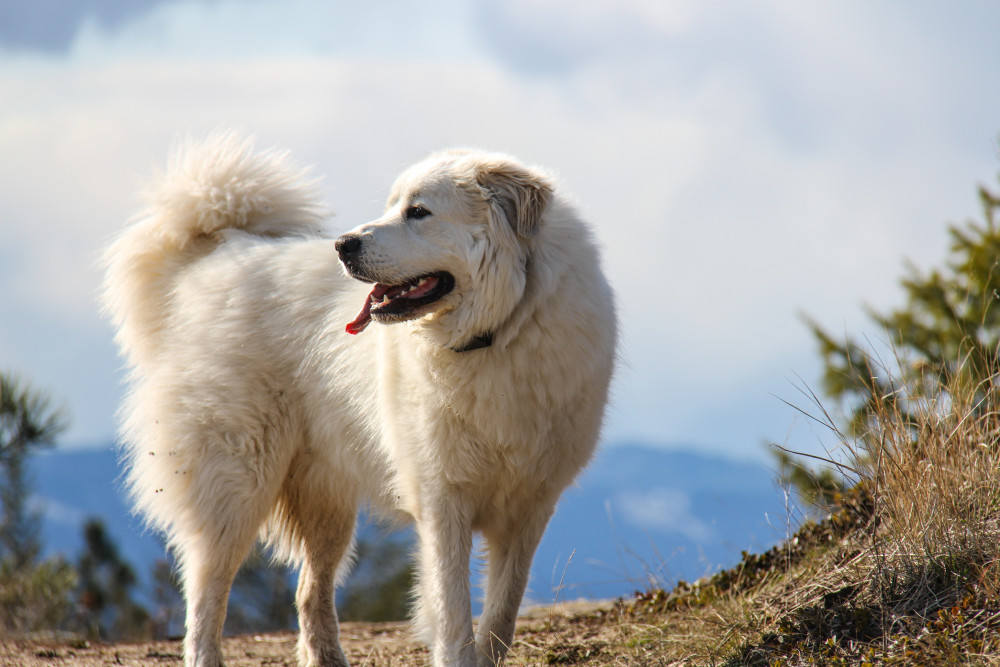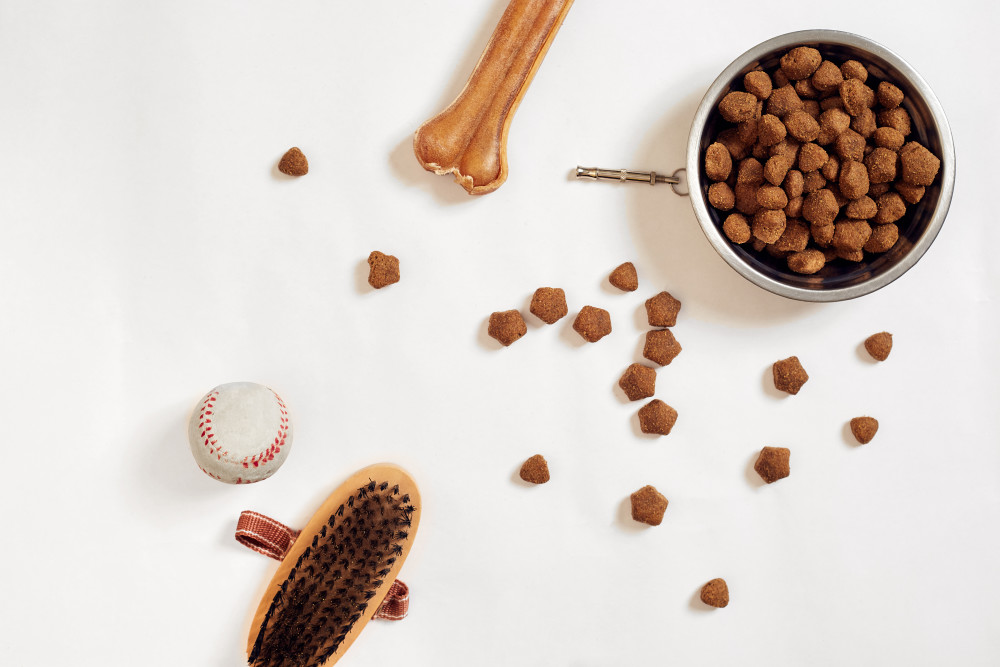Great Pyrenees

Great Pyrenees Overview
“Great” is the operative word in the Great Pyrenees’ name. These dogs are majestic and gentle giants, with tremendous strength and durability. While they give off the air of cool, calm, collectiveness, Pyrs can put on a brave face and spring into action when faced with a threat. They were originally bred for strenuous work, guarding flocks on steep mountain slopes—and they have the chops to do it. This elegant and clever breed is large in stature, sometimes over 100 lbs, with a white, or mostly white coat that can sometimes be marked with shades of badger, grey, tan or reddish brown.
The legacy of the Great Pyrenees dates back centuries ago, where they worked alongside shepherds and herding dogs in their namesake Pyrenees Mountains, the natural border between France and Spain. In the 17th century, they were adopted as French court dogs. When it came to work, their job was to guard over the flock and scare off predators like wolves or bears. They have a Zen-like patience that’s come from spending days on end in sub-zero temperatures, watching over sheep. Then, with a flip of a switch, their bravery will shine through when defending a flock from danger.
The first pair of Great Pyrenees dogs were brought to the US in 1824 by General Lafayette for his friend J.S. Skinner.
Did you know?
The Great Pyrenees is also known as Le Grande Chien de Montages (which means the “big dog of the mountains”, in French.)
Great Pyrenees Stats
Kid-Friendly
Good with other animals
Intelligent
Working dog
Caring for your breed
Daily kibble serving
1-2 cups
Daily exercise
2 hours
Grooming frequency
Brushed Regularly

Feeding your Great Pyrenees
Despite their significant size, Great Pyrenees aren’t known to eat huge quantities of food. However, they can get rather protective of their meals if other dogs are around. They can be fed dry, high quality dog food that’s low in protein and specially formulated for large dogs. Great Pyrenees are vulnerable to bloat or gastric dilatation-volvulus (GDV), which is when the stomach twists and swells internally. To prevent this, feed this breed small meals and make sure they don’t engage in vigorous exercise before or after meal time.